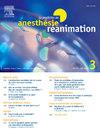Embolie pulmonaire grave postopératoire : état de l’art et perspectives
Q4 Nursing
引用次数: 0
Abstract
L’embolie pulmonaire grave est une situation à haut risque de mortalité. La période postopératoire, du fait du risque hémorragique inhérent, rend complexe la prise en charge quand la thrombolyse est contre-indiquée. L’indication d’une désobstruction chirurgicale ou instrumentale impose un transfert dans un centre expert. L’ECMO pourrait avoir une place importante pour stabiliser le patient avant confirmation diagnostique ou décision thérapeutique. Enfin, un contact systématique avec des équipes expertes multidisciplinaires en appui du clinicien pourrait fluidifier la prise en charge.
Severe pulmonary embolism conveys a high-risk of mortality. The management in the postoperative period is complex due to an increased risk of bleeding. Indeed, systemic thrombolysis may be potentially contraindicated. Alternatives treatments such as surgical embolectomy or percutaneous catheter-directed therapies require either cardiothoracic surgery or specialized expertise. Extracorporeal membrane oxygenation may be crucial for rescuing and stabilizing the patient before confirming the diagnosis or making therapeutic decisions. Multidisciplinary pulmonary embolism teams may enhance clinical decision-making and facilitate the implementation of an effective management plan.
术后严重肺栓塞:技术现状与展望
严重肺栓塞是一种致命风险极高的疾病。术后的一段时间内,由于非侵入性的高风险,使得溶栓治疗变得复杂。如果出现外科或器械性血栓阻塞,则需要转入专家中心。在诊断确认或治疗决定之前,ECMO 对稳定患者病情至关重要。此外,在临床医生的支持下,与多学科专家团队建立系统的联系也会使治疗更加顺畅。由于出血风险增加,术后的处理非常复杂。事实上,全身溶栓治疗可能是禁忌症。外科栓子切除术或经皮导管导向疗法等替代疗法需要心胸外科手术或专业技术。在确诊或做出治疗决定之前,体外膜肺氧合可能是抢救和稳定患者病情的关键。多学科肺栓塞团队可以加强临床决策,促进有效管理计划的实施。
本文章由计算机程序翻译,如有差异,请以英文原文为准。
求助全文
约1分钟内获得全文
求助全文
来源期刊

Praticien en Anesthesie Reanimation
Medicine-Anesthesiology and Pain Medicine
CiteScore
0.10
自引率
0.00%
发文量
61
审稿时长
51 days
期刊介绍:
Conçu et élaboré pour la formation médicale continue des anesthésistes réanimateurs, Le Praticien en anesthésie réanimation répond à des objectifs clairement définis. - Être au plus près de votre quotidien : la revue vous apporte des réponses immédiatement opérationnelles aux problèmes rencontrés dans votre exercice.
 求助内容:
求助内容: 应助结果提醒方式:
应助结果提醒方式:


